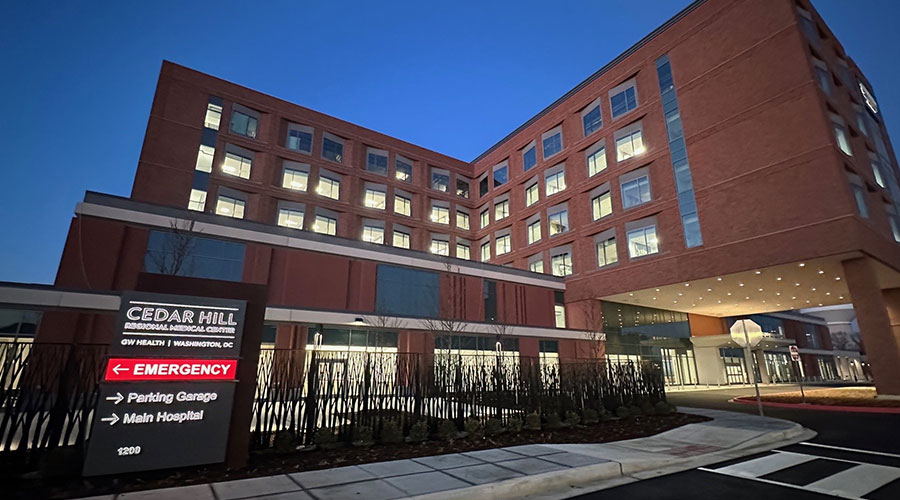In 2019, Seattle Children’s Hospital was forced to close its operating rooms following the death of one patient and illness in at least six others. Los Angeles County-USC Medical Center abruptly halted all elective surgeries for two weeks. Chambersburg Hospital in Pennsylvania had to relocate some patients to neighboring facilities. More than 40 employees in the maternity unit at New York’s Staten Island University Hospital North reported headaches, dizziness and sore throats.
The common denominator in all of these cases was mold.
“Unfortunately, mold formation and propagation continue to plague too many of our healthcare facilities,” said Ben Hixson, owner and building envelope senior consultant with Alabama-based Hixson Consultants Inc.
A growing problem
Candida auris (C. auris) – a drug-resistant fungus that can live on surfaces in healthcare environments and cause bloodstream, wound and ear infections – was only discovered 10 years ago, but is now one of the world’s most feared microbes in healthcare settings. Outbreaks have also been reported around the world, including in the United States.
R. Mark Nunnelly, president of Alabama-based Nunnelly & Associates Inc., said mold and humidity are persistent problems in hospitals, particularly operating rooms. Surgical suites are being maintained at cooler conditions than the engineer designed the HVAC system to accommodate.
“Most of what I’ve seen is over the years is, because of blood-borne pathogens, doctors are wearing layered gowning. So the typical standard of 68 to 72 degrees is just too warm for an extended surgery,” Nunnelly said. “Most of the time we see this in deep cavity surgery, orthopedics or cardiovascular surgeries that are going to last several hours and be very intense.”
Excessive humidity and condensate can lead to microbial growth on cooling coils and in ductwork and drain pans; “raining” in operating rooms when humidity condenses on cool surfaces, like ceiling-mounted supply air diffusers; and possible increases in surgical site infections, when condensate drops from unsterile surfaces.
Size matters
Proper selection, sizing and application of HVAC systems are essential to controlling humidity levels to minimize the chance of moisture in the air, which feeds mold spores. Most HVAC systems, Nunnelly said, are installed primarily to heat or cool, with humidity control a secondary consideration. Mechanical HVAC systems capable of supplying air at dew points low enough to compensate for moisture gain within spaces is necessary to promote the healthiest conditions possible.
“The design community is beginning to understand that these types of surgical facilities do need colder temperatures, and so we’re using different types of HVAC systems in the design of these types of facilities,” Nunnelly said.
Hixson said one egregious occurrence is oversizing HVAC units for “creature comfort” and not for appreciable mechanical dehumidification. Design issues include roof eaves with no overhangs and inadequate insulation, which can contribute to the potential for condensation and mold formation. In addition, abuse of the thermoplastic polyolefin (TPO) single-ply roofing membranes during new construction and reroofing can cause cuts, punctures and gouges that leak right away or not long after construction.
“Designing with lower-than-needed fenestration units can contribute to leakage and, if unchecked via proactive performance testing, can lead to mold growth,” Hixson said.
Moisture sources
Nunnelly said there are three primary reasons humidity and mold problems are prevalent in healthcare facilities when it comes to HVAC systems:
- A lack of understanding of psychometrics by the engineering community and/or maintenance technicians;
- HVAC system design engineers unfamiliar with the weather data from the American Society of Heating, Refrigerating and Air-Conditioning Engineers (ASHRAE) Fundamentals Handbooks, which instructs engineers to design for temperature and humidity control, especially when there are large volumes of ventilation air being introduced into a facility;
- Installing and/or applying inappropriate equipment. For areas with greater humidity control requirements – especially for lower dew point temperature applications in surgical suites – low-temperature chillers or desiccant-based technologies should be considered.
“The performance of these systems is greatly affected by the integrity of the building. The absolute key to controlling mold within the building is to control the humidity and/or moisture,” Nunnelly said. “Everything could be right in the HVAC system with its design, installation and operation, and then there may be problems from the building envelope that make it worse than what it was designed to handle.”
Remediating the problem
Nunnelly said there are a lot of variables throughout the course of a building’s life, including mechanical systems and construction activities that make it difficult to maintain a 100% mold-free facility.
“In a large, complex facility, having a mold-free facility isn’t realistic short of a heroic team effort to avoid mold formation,” Hixson said. “This requires good design, good construction practices, and proactive owner operations and maintenance.”
The use of mold-resistant drywall and sheathing have lessened the potential for mold formation and spread, but Hixson said tighter buildings, mandated fresh air intake, lowest-cost TPO single-ply roofing installations used as work platforms, and a lackadaisical attitude toward minimizing “construction moisture intrusion” contribute to mold problems.

 Design Plays a Role in the Future of Healthcare
Design Plays a Role in the Future of Healthcare Cedar Hill Regional Medical Center GW Health Officially Opens
Cedar Hill Regional Medical Center GW Health Officially Opens Designing Healthcare Facilities for Pediatric and Geriatric Populations
Designing Healthcare Facilities for Pediatric and Geriatric Populations Kaiser Permanente Announces New Hospital Tower at Sunnyside Medical Center
Kaiser Permanente Announces New Hospital Tower at Sunnyside Medical Center Building Disaster Resilience Through Collaboration
Building Disaster Resilience Through Collaboration